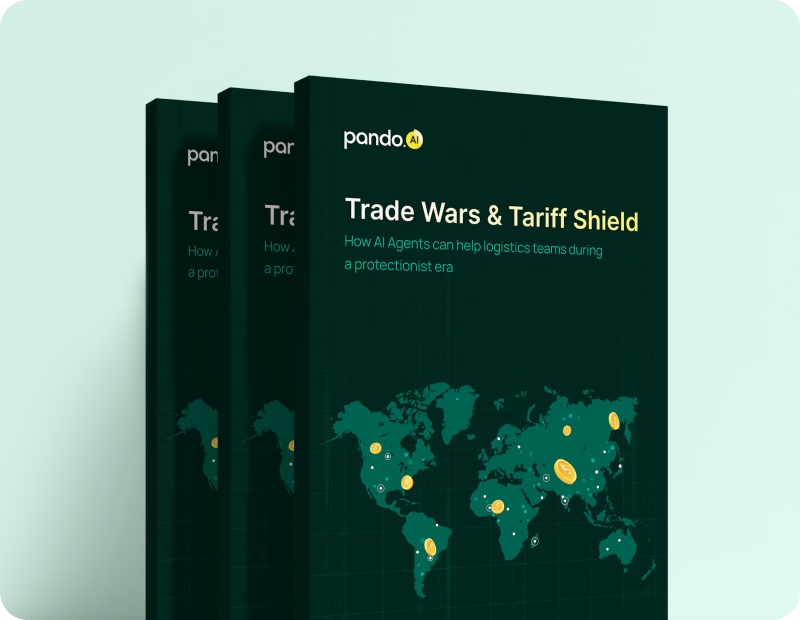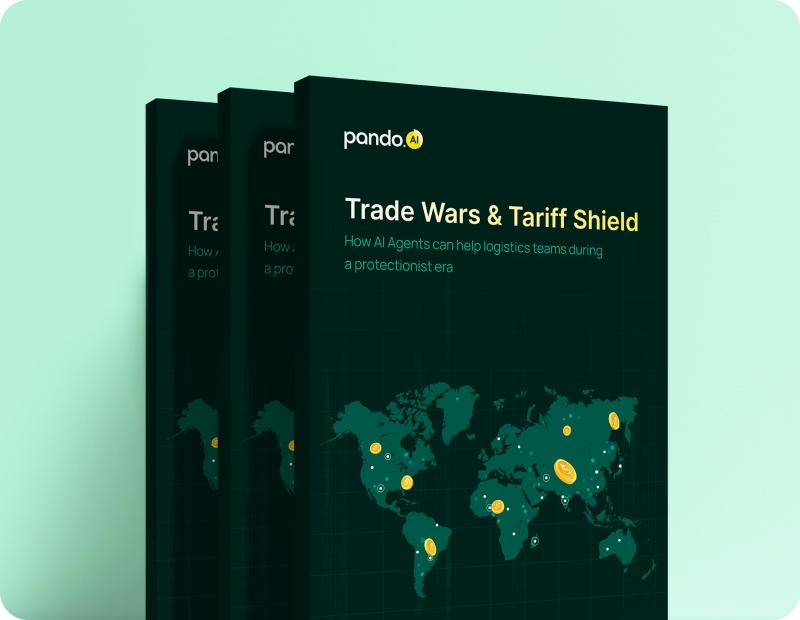-
Products Products
- Industry
- Initiatives
- Resources
- Company
- Book a demo

Before you go: Logistics leaders just dropped the truth on AI
The State of AI in Logistics 2025 is here — no hype, just real conversations and raw insights.
Optimize supply chain finance solutions with freight spend visibility
Discover the importance of gaining visibility into freight spend and learn how to unlock it.
Published on November 1, 2023 • 4 mins read
Durga Pratiha

Discover the importance of gaining visibility into freight spend and learn how to unlock it.
In the intricate web of supply chain management, every penny counts. Organizations often struggle to manually match thousands of invoices to complex rate structures, leading to errors, overpayments, and inefficiencies in freight spend tracking. Freight spend refers to the expenses incurred by a company for transporting goods from one point to another, for example: payments made to carriers, logistics providers, warehousing services, and other aspects of the transportation process. The complexity arises from the multitude of transactions, vendors, and factors involved in freight management.
The use of technology to automate freight spend tracking and reporting marks a pivotal advancement in modern logistics. Visibility into freight spend is essential for cost control, as it allows your organization to identify savings, negotiate better rates, and optimize transportation budgets. It also plays a crucial role in vendor management, enabling evaluation of vendor performance, contract negotiation, and maximizing value. Freight spend visibility also helps align expenses with business strategies and ensures compliance and accountability, reducing the risk of fraud and unauthorized spending.
This blog will explore why visibility into freight spend is essential for efficient supply chain management and how it can alleviate the time-consuming and exhaustive process of tracking payments and vendor relationships.
Today's challenges in achieving transportation spend visibility are complex and multifaceted
Data fragmentation is a significant obstacle. Many organizations like yours might deal with separate systems and data sources, making gathering and unifying transportation-related data tough. This includes data from different carriers, logistics providers, and internal departments, leaving you without a unified view. Achieving real-time visibility is a challenging task without a single source of truth.
Furthermore, the sheer volume of data generated in modern transportation operations is challenging. Handling data like shipment tracking, invoices, contracts, and performance metrics can overwhelm manual processes. Analyzing this data accurately and quickly requires advanced analytics tools and technology. Additionally, ensuring data security and compliance adds complexity to sharing and centralizing transportation data.
Lack of freight spend visibility can substantially impact an organization's bottom line
While research organizations, like McKinsey, acknowledge the vital role spend analytics and visibility play in supply chains, enterprises have yet to embrace the concept. This suggests that you, like many others, might be missing out on understanding where your transportation spend is going and the potential for cost savings.
The consequences of lacking freight spend visibility can be quite impactful for your organization:
-
Overspending on freight: When visibility is lacking, there's a risk of overpaying for freight services. This could occur due to not negotiating rates with carriers, being unaware of more cost-effective shipping options, or failing to utilize data for optimizing freight shipping routes.
-
Inaccurate budgeting and forecasting: Failing to accurately track and analyze freight spend can cause inaccurate budgeting and forecasting, resulting in financial surprises, unanticipated expenses, and an inability to make informed financial decisions.
-
Missed opportunities for improvement: The lack of data-driven insights into your freight spend might cause you to miss opportunities for process improvements, innovation, or strategic advancements within your supply chain.
The bottom-line impact of not having freight spend visibility can be significant. According to a study by Deloitte, businesses can save an average of 3-6% on their transportation costs by implementing freight spend visibility solutions.
Leveraging technology for freight spend analysis offers valuable insights across dimensions
In your freight audit and payment (FAP) processes, implementing technology-driven solutions is your essential ally. These solutions automate audits, reduce errors, and ensure alignment with contracted rates. They excel at spotting discrepancies, preventing future inaccuracies, and providing real-time insights into payment status and transportation costs, all contributing to enhanced visibility and efficiency in managing your transportation expenses.
Artificial intelligence (AI) and machine learning (ML) play a growing role in your FAP processes. AI algorithms analyze vast invoice and shipment data, spotting patterns and irregularities for error detection. Machine learning models continuously improve accuracy by learning from historical data and adapting to changing billing practices. Examples include AI-powered invoice data extraction, which automates key information extraction, and ML-driven anomaly detection, which flags billing irregularities. These technologies not only streamline your audit process but also provide actionable insights into cost drivers and trends, enhancing your overall transportation spend visibility.
-
Segment customer base and customize logistics: Divide your customer base into distinct groups and assess their shipping patterns and preferences to tailor your logistics, optimize routes, and negotiate better carrier rates. This approach enhances the overall experience, improves freight spend visibility, and empowers informed resource allocation, saving costs in supply chain operations.
-
Consider product impact on expenses: Analyze products by freight attributes to reveal cost drivers. Take proactive steps like optimizing packaging, consolidating shipments, and negotiating rates for high-volume items.
-
Collaborate with carriers and customers: Establish open communication, share shipment data, and embrace technology for real-time tracking. Carrier decisions affect transportation costs and reliability, so build strategic partnerships and implement scorecards for informed carrier selection.
-
Optimize lanes for efficiency and savings: Use technology and data to continuously improve routes, negotiate better rates, consolidate shipments, reduce transit times, and enhance customer satisfaction while promoting sustainability.
-
Leverage data analytics: Harness data analytics to identify cost inefficiencies and performance issues in your supply chain. Optimize routing, capacity utilization, and vendor performance. Make informed decisions about logistics partners, enhancing supply chain efficiency and reliability.
-
Optimize distribution and fulfillment centers: Adopt warehouse management systems (WMS) and automation to reduce errors, save costs, and optimize inventory management. This approach promotes a sustainable, cost-effective approach to freight spend management.
Achieving 100% freight spend visibility enables informed and strategic decision-making
When you have access to 100% freight spend visibility, you gain a powerful tool for your organization. It provides you with a comprehensive view of your transportation expenses, giving you the ability to make strategic decisions that are crucial for driving a company’s growth and maintaining competitiveness. With this complete visibility at your disposal, you can accurately assess your current transportation costs, pinpoint any inefficiencies, and uncover valuable cost-saving opportunities. This data-driven insight empowers you to make strategic decisions in key areas like freight sourcing, carrier selection, and budgeting.
Furthermore, you can adjust your logistics strategies in real time, respond to market fluctuations, and align your supply chain operations with changing customer demands. By leveraging 100% freight spend visibility, you can optimize your transportation budget, enhance vendor relationships, and strategically position yourself in your respective industry, ultimately gaining a competitive edge and ensuring long-term success.
Subscribe to Pando blog and Crossroads newsletter now!
Stay up to date with the latest logistics, transportation, and supply chain tips and news.
Subscribe Here!

Related blogs
Freight audit best practices: Maximizing accuracy and efficiency in logistic operations












